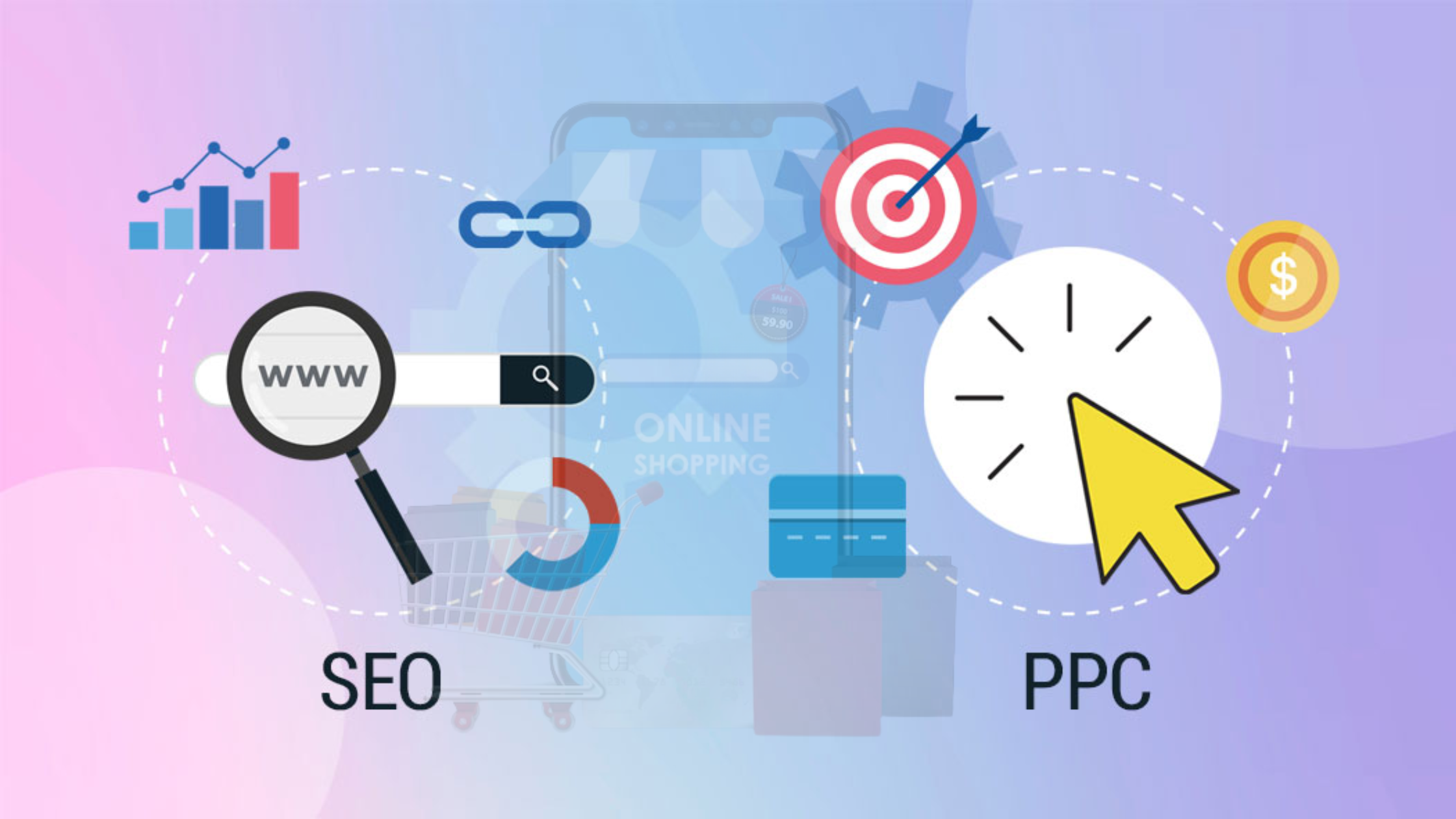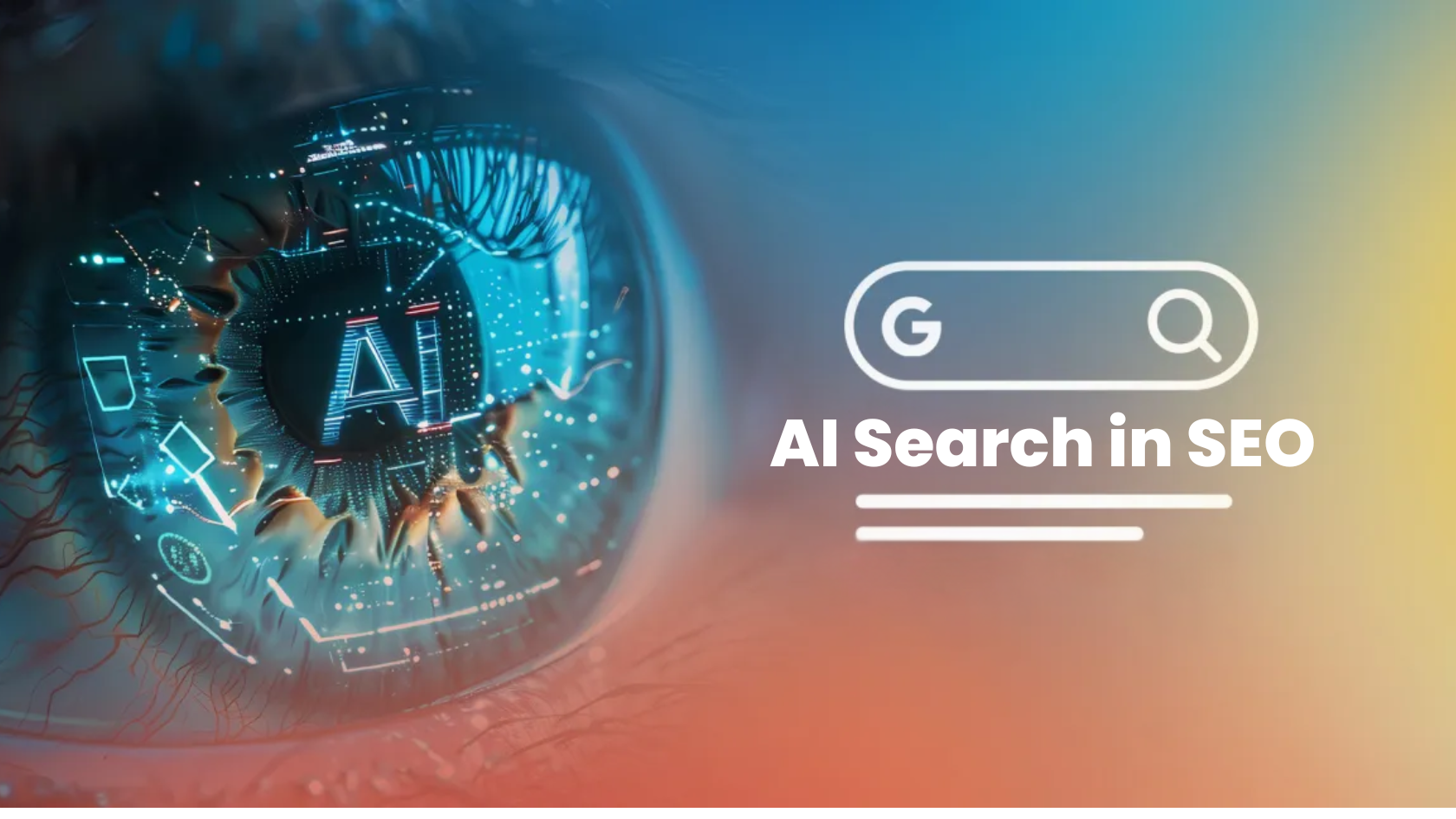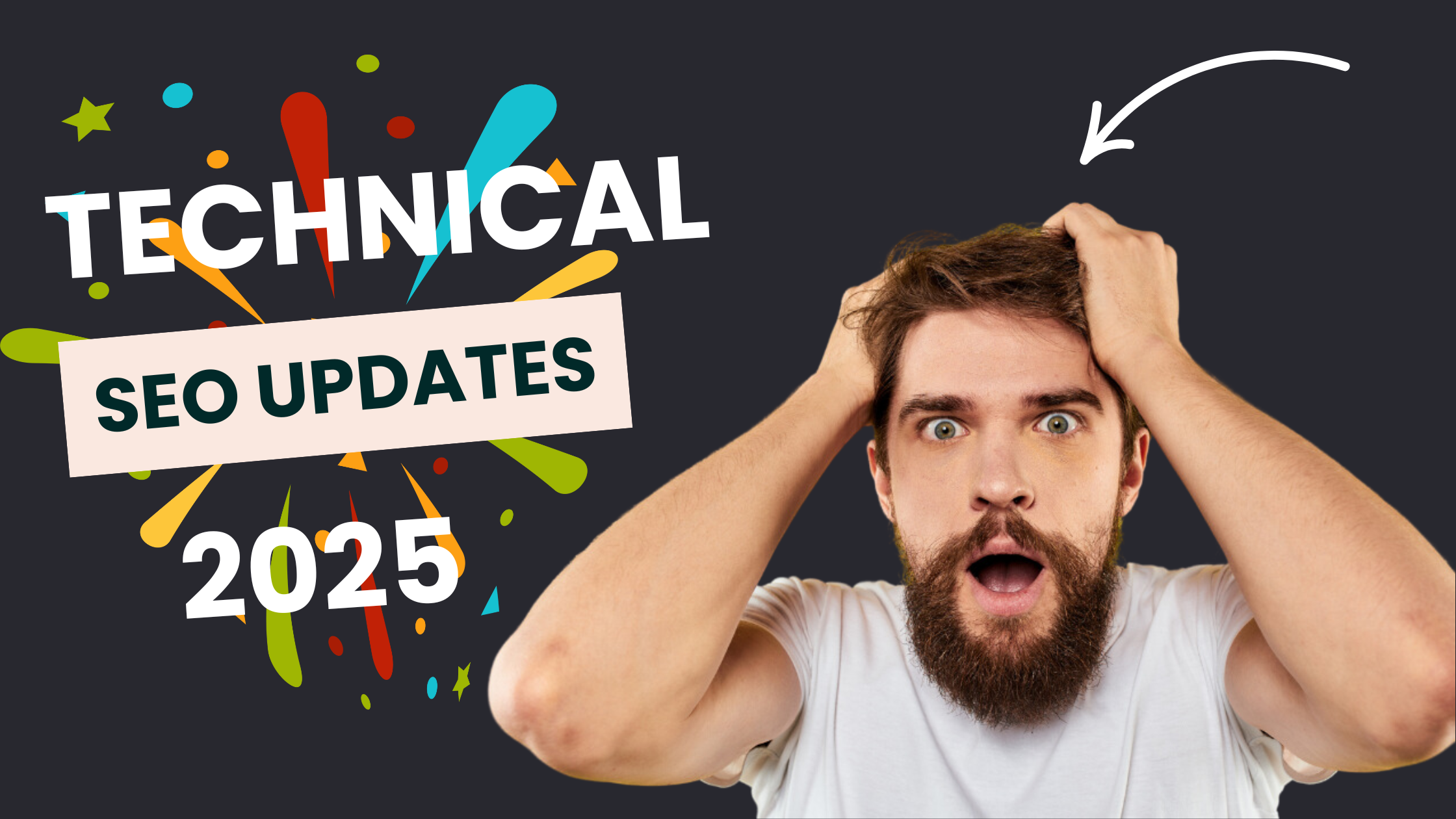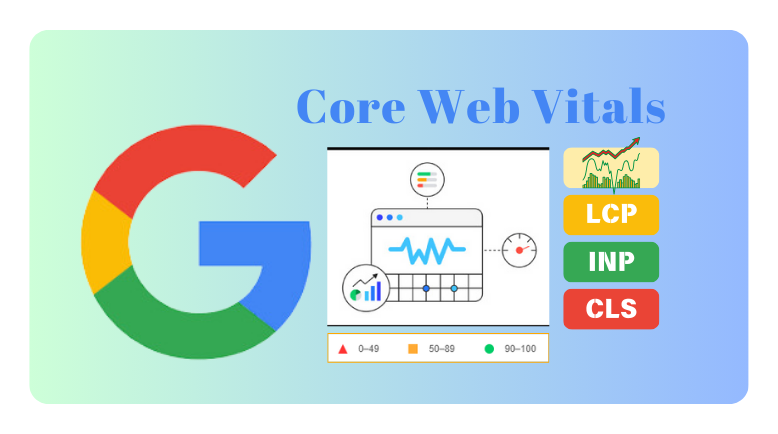Growing an e-commerce store is not easy in this competitive era. Businesses need a strategic digital marketing approach to grow traffic and sales which combines e-commerce SEO and PPC.
In this blog, we will explore how e-commerce PPC and SEO work, their key benefits, differences, best practices, and how businesses can utilize both & relevant case studies.
What is E-commerce SEO?
E-commerce SEO refers to the practice of optimizing an online store so that it appears higher in search engine rankings. It entails optimizing website structure, content, and technicalities to generate organic traffic and boost conversions.
Importance of SEO for Online Stores
- Increases organic traffic without spending money on ads.
- Enhances customer trust and strengthens brand credibility.
- Streamlines user experience (UX) and website performance.
- Assists e-commerce websites to compete with larger marketplaces.
Key elements of e-commerce SEO:
- Keyword Research & Optimization
- On-Page SEO
- Technical SEO
- Content Marketing & Blogging:
- Link Building & Strengthening for E-commerce:
Best Practices for Implementing E-commerce SEO
Optimizing Product Pages for Higher Rankings
Your product pages are the backbone of your e-commerce site and optimizing them ensures they rank well in search engines. Implement the following e-commerce SEO tips for optimizing the product pages of your website:
- Select product titles that both stand out and describe their content.
- Write detailed, SEO-optimized product descriptions.
- The optimization of images and videos should be done while maintaining quality standards.
- Keep URLs short, clean, and keyword rich.
- Add structured data (schema markup) for better visibility.
Leveraging User-Generated Content & Reviews
Customer reviews and user-generated content (UGC) enhance credibility and influence purchasing decisions while improving SEO.
- Encourage and display customer reviews.
- Integrate Q&A sections on product pages.
- Utilize customer photos and videos in your content.
- Send automated post-purchase emails encouraging customers to leave reviews.
Improving Internal Linking & Navigation
A solid internal linking structure makes website navigation easier, spreads link equity and allows search engines to scan your pages more effectively.
- Use Breadcrumb Navigation to explore your website, which improves UX and helps search engines grasp site hierarchy.
- Link Related Products and Categories to keep users interested and help them through the purchasing process.
- Choose Descriptive Anchor Text with keywords which explain precisely what the target page contains.
- Create an SEO-Friendly Site Architecture with category pages, subcategories, and well-organized product listings.
Enhancing Mobile Usability and Core Web Vitals
Mobile commerce is expanding at a fast pace, so it is imperative to have a smooth experience on tablets and smartphones.
As a matter of fact, retail e-commerce sales are estimated to exceed 4.3 trillion U.S. dollars worldwide in 2025, and this figure is expected to grow more in the future.
- Ensure your website is mobile-friendly by prioritizing mobile-first indexing.
- Boost speed by compressing images, enabling lazy loading, and minimizing scripts.
- Make navigation effortless with clear buttons, simple menus, and an intuitive layout.
- Keep an eye on Core Web Vitals (LCP, INP, CLS) to guarantee fast, smooth, and stable page experiences.
For expert guidance, you can partner with e-commerce SEO services to optimize your website efficiently.
After learning about e-commerce SEO, now let’s take a look at how PPC works in e-commerce:
What is PPC and How Does It Work?
PPC is a digital advertising approach in which businesses pay a charge when their ad is clicked. It enables e-commerce enterprises to appear at the top of search results and social media feeds, resulting in instant traffic to product pages.
Benefits of E-Commerce PPC for Online Stores
- Immediate traffic and conversions.
- Highly targeted ads based on demographics, interests, and behaviors.
- Scalability with budget control.
- Detailed performance tracking for optimization.
Types of PPC Ads for E-commerce
- Google Shopping Ads: Display product images, prices, and reviews directly in search results.
- Search & Display Ads: Target keyword-based searches and place ads on relevant websites.
- Performance Max: Uses automation to optimize ads across Google’s channels.
- Retargeting Ads: Re-engage visitors who didn’t convert on their first visit.
- Social Media Marketing: Run ads on social media platforms such as Snapchat, Instagram, TikTok, and more.
Strategies for Effective PPC Management
Successful PPC campaigns require a strategic approach to maximize ad performance and return on investment. Here are key strategies to enhance e-commerce PPC management.
Keyword Targeting & Ad Copy Optimization
The right keywords ensure your ads reach the right audience at the right time.
- Conduct thorough keyword research and focus on high-intent keywords.
- Use negative keywords to eliminate irrelevant traffic.
- Craft compelling ad copy with strong CTAs and A/B test variations.
Setting Up High-Converting Landing Pages
A well-designed landing page can make or break a PPC campaign. Your ad might attract clicks, but conversions happen on the landing page.
- Ensure a clean, mobile-friendly design with a clear headline and strong CTA.
- Highlight key benefits and minimize distractions for better conversions.
Budgeting & Bidding Strategies
Effective budgeting and bidding ensure that you’re maximizing your ad spend without overspending on low-performing keywords.
- Set a realistic budget and allocate more to high-performing keywords.
- Use automated or manual bidding based on campaign goals.
- Optimize with geo-targeting and audience segmentation.
Performance Tracking & Optimization: Enhanced Conversion
Continuous performance monitoring and optimization are key to a successful PPC strategy. Without e-commerce tracking, you won’t know what’s working and what needs improvement.
- Track key metrics like CTR, CPC, and ROAS using Google Ads and Analytics.
- Continuously optimize ad copy, bids, and landing pages based on data.
- Implement A/B testing and remarketing to improve conversions.
Businesses can improve conversions and ROI by implementing these effective strategies and collaborating with PPC advertising services.
SEO vs. PPC: Which One is Better for E-commerce?
SEO and PPC advertising are two of the most effective digital marketing strategies for growing an e-commerce business. While both aim to increase website traffic and sales, they function differently and offer unique advantages.
Let’s break down the key differences, benefits, and how to use both strategies together for maximum e-commerce success.
| Feature | SEO | PPC |
| Traffic Source | Organic search results | Paid ads (Google Ads, Social Media) |
| Cost | Free clicks, but requires investment in content & optimization | Pay-per-click model, costs depend on competition |
| Time to Results | Takes months to build rankings | Immediate visibility & traffic |
| Longevity | Long-lasting results if maintained | Traffic stops once budget runs out |
| Click-Through Rate (CTR) | Higher trust & CTR in organic results | Lower CTR but better targeting control |
| Best For | Long-term brand authority & cost-effective traffic | Quick sales, promotions, and highly targeted campaigns |
Short-Term vs. Long-Term Benefits
SEO (Long-Term Growth)
- Builds brand authority and credibility.
- Provides consistent, free traffic once rankings are achieved.
- Increases customer trust, as users prefer organic results.
PPC (Immediate Impact)
- Drives instant traffic and sales.
- Targets specific audiences with highly personalized ads.
- Helps test and refine keyword strategies for SEO.
Key takeaway: SEO is a long-term investment, while PPC delivers fast results. Combining both ensures steady, sustainable growth.
How to Use Both for Maximum Growth
PPC for Quick Wins: Fast traffic, precise targeting, ideal for product launches and promotions.
SEO for Stability: Builds authority, increases organic traffic, and improves ROI over time.
How to Combine SEO and PPC for E-commerce Success?
A combined SEO + PPC strategy ensures maximum visibility, traffic, and conversions. Here’s how to integrate both effectively:
- Leverage PPC Insights for SEO:
Use high-performing paid keywords to improve your organic search strategy.
- Retarget to Boost Organic Reach:
Re-engage past visitors with paid ads to drive more conversions.
- Keep Content and Ads Aligned:
Ensure consistency between your organic content and paid campaigns for a seamless experience.
- Test, Learn, and Optimize:
Use A/B testing from ads to refine your content and improve engagement.
Case Study: Successful SEO & PPC Implementation for an E-commerce Brand
Implementing SEO and PPC strategies can significantly enhance an e-commerce brand’s online presence, increasing traffic and sales. Here are concise overviews of three successful case studies:
JemJem (Refurbished Apple Devices)
Challenges: Weak brand presence.
Strategies: SEO fixes post-migration, content marketing, and PPC optimization.
Results: Getting traffic in thousands for brand keywords, 135K+ sessions, stronger brand visibility.
Oh My Print Solutions (Printing Services)
Challenges: High conversion optimization costs and low search campaign effectiveness.
Strategies: Website optimization, PPC keyword research, remarketing.
Results: 6.22M impressions, 103K clicks, 4.17K conversions.
The Chocolate Factory Thailand (E-commerce Pivot)
Challenges: Shift from physical to online sales during COVID-19.
Strategies: Market research, content strategy, high-quality visuals.
Results: 50% increase in online sales, 20% growth in customer base, and 30% rise in revenue.
Key Takeaways:
- SEO audits & content strategies boost organic traffic.
- Data-driven PPC improves clicks & conversions.
- Adaptability ensures long-term business growth.
- User experience & branding drive higher engagement.
Conclusion
To wrap it up, optimizing an e-commerce business requires a strategic combination of SEO and PPC to drive traffic, boost visibility, and increase conversions. It is important to keep up with algorithm updates, use advanced tools, and refine strategies for success. While in-house management is possible, expert SEO services and PPC advertising assistance drive higher ROI and sustainable growth, keeping e-commerce brands competitive.
Take your e-commerce brand to the next level—talk to our SEO & PPC specialists now!
FAQ




 It helps you to:
It helps you to:



